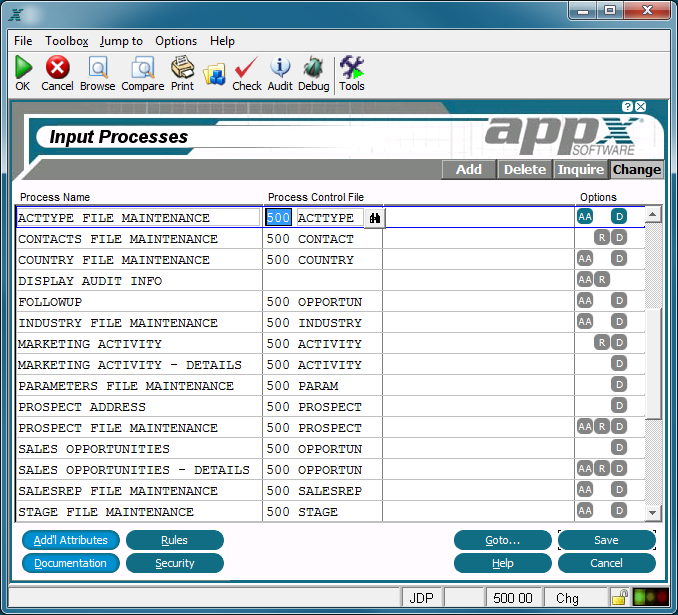Chapter 3-6: Input Processes |
Input Process Specifications Input process specifications establish the general attributes of an input process, including a process control file and operational characteristics. The Input Processes screen, shown below, displays when you select inputs from the Application Design Specifications Menu.
Input Processes Screen The Input Processes screen contains the following fields: Process Name identifies a specific process and consists of up to 30 uppercase alphanumeric characters that must be unique within type and application. Process Control File is optional for input processes. If present, it identifies a file by application ID and file name that is to be automatically managed by APPX during the execution of this process. APPX automatically reads, writes, rewrites, and deletes records in the process control file (PCF) during input process execution (and provides for updating the child PCF for any automatic children). If the PCF is left blank, the input process will execute once and then automatically end (as opposed to executing once for every record).
Options are indicators that are present whenever the options they denote have been defined. Options applicable to this screen are Buttons are provided at the bottom of each Input Processes screen for accessing the following options: Additional attributes - See the Input Process Additional Attributes Option for details. Rules - See the Input Process Rules Option for details. Documentation - Same as the Process Documentation Option. Security - Same as the Process Security Option. Goto... - Allows you to identify and retrieve another record by optionally entering a full or partial key. Help - Allows you to view online help text for a selected item. Close or Cancel - In Inquire mode, Close allows you to end the current process. Otherwise, cancel allows you to end the current process without saving changes, if any, to the current record. In addition, the menu bar provides the following pulldown menus: Toolbox - Same as the Process Toolbox Pulldown Menu. Jump to - Same as the Process Jump to Pulldown Menu. |
Application Design Manual "Powered by Appx Software"1092 ©2006 By APPX Software, Inc. All Rights Reserved |
